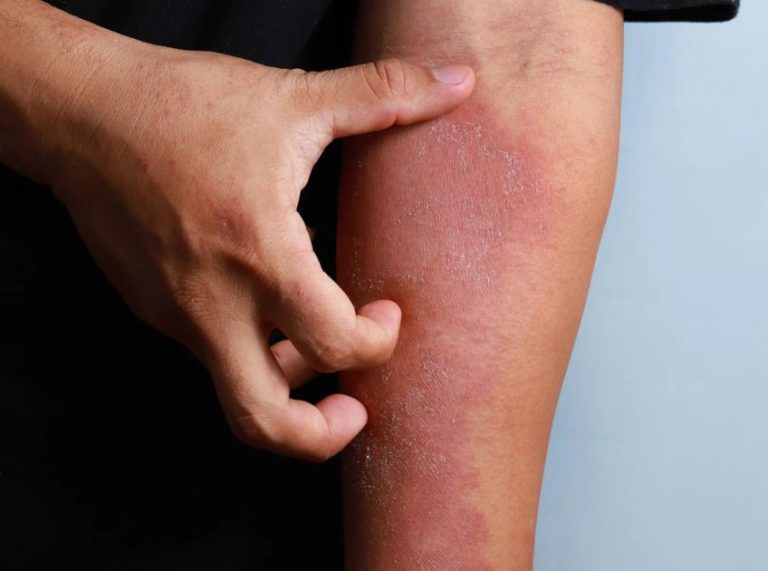
Important: This article is for informational purposes only. Please read our full disclaimer for more details.
Have you witnessed a lump on top of foot recently and wondered what it could be?
Often, lumps appear and resolve in different parts of the body. However, a sudden appearance of a lump may also indicate a serious underlying problem, especially if it is painful and causing discomfort.
Here are a few things you need to check by touching and viewing the lump-
- Texture– soft or hard
- Color– whether the same as the foot’s skin color or a different
- Injury– in the surrounding area
- Painful or not
There could be different reasons that can cause a lump on the foot, among which cysts are predominant. However, you should not decide what type of lump it is without consulting a doctor.
Here are some major reasons that can lead to the development of a lump on top of the foot-
What Causes A Lump On The Top Of Your Foot?
1. Cutaneous Horn
Even though most cases of cutaneous horn appear on the face, neck, and shoulders, in rare cases, it may appear on the foot.
A lumpy keratin growth on the epidermis is called a cutaneous horn (1). Keratin is a type of protein found in hair. Usually, it appears bumpy and spiked, resembling the horns of animals, thus being named so.
Sometimes, cutaneous horn indicates cancer; therefore, immediate attention is required. Visit your doctor if the cutaneous horn appears-
- Inflamed along with the surrounding area
- Getting bigger
- Hard at the base
2. Bone Spur
Sometimes, bone grows on the top of the foot by emerging out of the joint. Basically, it’s an extra growth of bone tissue. The condition is called bone spur and is medically termed as dorsal boss, dorsal exostosis, or tarsal boss.
When there is constant pressure or stress at a particular part of the foot for a long duration, extra bone appears to repair the damage. It causes bone spurs (2). Even though such spurs can appear anywhere, joints are often subjected to them.
3. Ganglion Cysts

It is one of the common reasons for getting a lump on top of the foot. These cysts are fluid-filled tissues and can appear in varying sizes (3). Luckily, they are not cancerous.
People with ganglion cysts may develop the following symptoms-
- Tingling sensation
- Numbness
- Loss of mobility
Often, these cysts resolve over time, but one can also get them removed surgically or by allowing the doctor to drain the fluid present inside the cysts with the help of a syringe.
4. Sebaceous Cysts
These cysts look similar to ganglion cysts and are noncancerous too. They are closed sacs that appear beneath the skin as a result of swollen hair follicles or blocked glands. Usually, such cysts appear on the neck and face but can be found on the top of the foot.
If sebaceous cysts cause problems walking or wearing shoes, you may seek medical help. The doctor injects the cysts with steroid drugs and removes them surgically.
5. Gout
Another common cause of a lump on top of the foot is a health issue called gout. When uric acid crystals build up excessively, it causes inflamed and swollen feet and hands (4). Usually, it appears around the base of the big toe, developing a burning sensation.
Different tests are recommended by the doctor to diagnose gout, such as
- Blood tests to find the level of uric acid
- X-ray
- Ultrasound
Certain lifestyle changes, especially adjusting diet and quitting smoking, are advised to manage the symptoms.
6. Bursitis

Our body contains small sacs called bursae that are filled with lubricating fluid. They reduce the friction between bones, tendons, and muscles, as well as skin near the joints. If one of the sacs becomes inflamed, it results in bursitis that causes pain and hinders movement (5).
Usually, over-the-counter nonsteroidal anti-inflammatory medications such as ibuprofen or aspirin are used to provide comfort from the pain. Using an ice pack can also reduce the swelling to some extent.
However, it is advised to visit the doctor if you experience the following symptoms-
- The condition has been same for over two weeks
- Pain is getting severe
- Inflammation is worsening and affecting the surrounding areas
7. Hallux Rigidus
When bone or cartilage at the base of the big toe is damaged due to some trauma, it may cause hallux rigidus, a type of arthritis (6). It creates a lump on the foot, around the big toe, and causes pain and stiffness. As a result, the person may face problems with walking.
While in rare cases, the doctor may recommend surgery, the alternative methods of getting relief from pain include-
- Soaking feet in warm and cold water alternatively
- Wearing one size bigger shoes or those that prevent big toe from bending
8. Lipoma
If the lump is not outside of the skin, such as in the cutaneous horn, but beneath the skin, it indicates a condition called lipoma (7). Usually, such lumps are soft to the touch and easy to move from the fingers.
Lipoma lumps are not cancerous and can appear on any body part. These lumps do not cause any pain and may resolve on their own with time. However, if you are conscious about them, surgical removal is the last resort. Some people live with these harmful lumps throughout their lives.
9. Rheumatoid Nodules

Firm lumps underneath the skin can also indicate a medical condition called rheumatoid arthritis (8). These lumps are hard to touch and appear in varying sizes- small like a pea or big like a walnut and are called rheumatoid nodules.
Usually, these nodules are not painful, but when they are close to a nerve, the person may feel pain and discomfort while walking. Underlying inflammation can also cause the nodules to become painful.
Antirheumatic drugs are often prescribed by the doctor to treat rheumatoid arthritis, and this drug shrinks the nodules as well. However, if there is no comfort with this medication, the doctor may give steroid shots directly over the nodules to shrink them.
Surgical removal is the last resort.
Conclusion
A lump on top of the foot could appear due to varying reasons. While some of the lumps are not harmful and painful and resolve on their own, some seek medical attention. If they do not appear to shrink, it could indicate some underlying condition.
Let your doctor diagnose the problem and provide the best line of treatment.
Related Articles
- Night Burning Feet: Hormones, Nerves, Deficiencies & Home Care
- 10 Home Remedies to Get Rid of Foot Pain
- 5 Simple Yoga Asanas For Strong Feet and Ankles
- Is Apple Cider Vinegar and Baking Soda Good for Athlete’s Foot?
- Is It Athlete’s Foot or Eczema? Here’s How to Know
- 7 Causes For Lump On the Back of Neck
- Listerine Foot Soak: Does it Work?
















